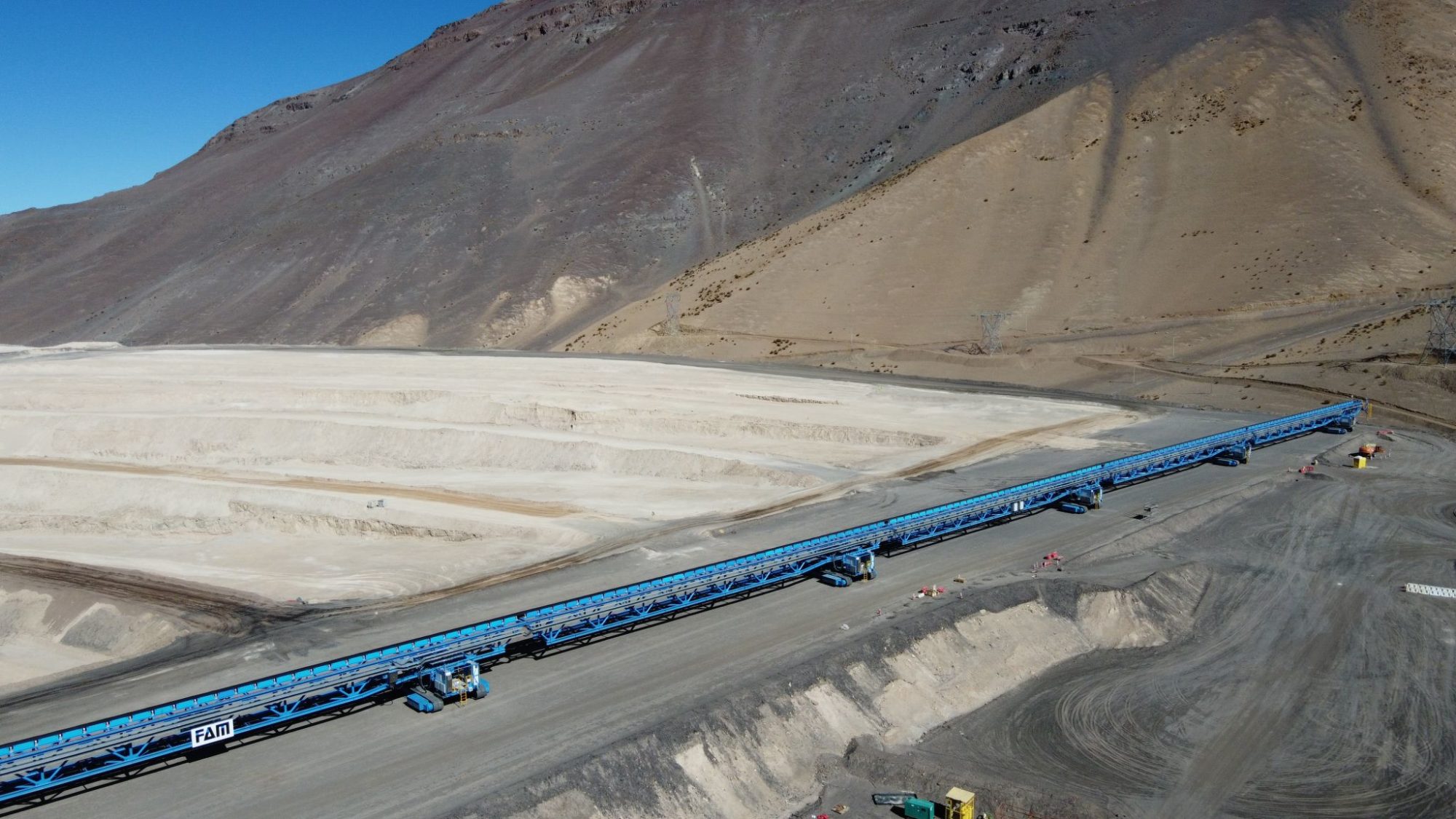In May 2022, Kinross Chile completed the assembly of its new FAM mobile tailings stacker at the La Coipa gold mine, Chile. The new 1,000 t/h tailings stacker for leached gold ore was one of the first improvements identified in the Phase 7 project due to a long lead-time in the delivery of the materials from Germany to Chile. The new stacker will increase operating performance by bringing new improvements to La Coipa, including increasing the size of the stacker to 500 m. It will also be controlled by a single operator in a technical operating room with various sensors and cameras to help monitor the stacker and surrounding areas.
At year-end 2021, Kinross increased La Coipa’s expected life of mine production by 45% to approximately 1 Moz of gold by incorporating the nearby Puren pit into the project and optimising the Phase 7 mine plan. The project’s life of mine estimate was also extended from 2024 to 2026. Pre-stripping at Puren has already begun. The company continues to study opportunities to further expand La Coipa’s mine plan, such as a possible additional Puren pushback and incorporating other adjacent pits into the project.
In February 2020, Kinross completed and approved a Feasibility Study to restart operations at La Coipa by mining the Phase 7 deposit. The project plan included refurbishing the existing process plant, camp and other infrastructure, as well as relocating the mining fleet (Cat 785C trucks and 994 wheel loaders) from the Maricunga operation, which was placed on care and maintenance in 2018. Pre-stripping began in January 2021 with production starting in Q1 2022. Kinross received approval on the project Declaration of Impact to Environment (DIA) permit in 2016 and, to date, has received all sectoral permits.
In Q4 2021, negotiations were completed with Codelco Chile to execute the Puren 2 project, which allowed the La Coipa life of mine to be extended until 2026. La Coipa’s estimated mineral reserve is approximately 898,000 oz of gold and 41.73 Moz of silver. These reserves are inclusive of both the Phase 7 and Puren deposits.
“This project presented us with a number of challenges, from getting the structure safely to the mine site while navigating the winding, hilly roads leading to La Coipa, to maintaining operation of the plant during the transition from one stacker to the next,” said Guillermo Olivares, General Manager, La Coipa. “We are very proud of the team at La Coipa and thank our partners who worked with us to ensure we maintained operations without stoppage while following health and safety best practices.”
“The new FAM stacker project was actually one of the first evaluations we did as a Phase 7 project that resulted, in the end, in recommending the purchase of a new stacker. It was one of the first contracts we signed as a Phase 7 project because it had a long lead time for the delivery of the different materials…so we had to advance in the first stage of engineering, which lasted about six months in 2020, where we made the definitions, according to the conditions we had at the site, adapting the equipment to our conditions and to the operation of La Coipa itself,” said Isabel Espinoza Pfeiffer, Superintendent of Engineering at the La Coipa operating company, Compania Minera Mantos de Oro.
Alfredo Aguilera, Contract Administrator for Assembly Management at FAM: “We started by planning the assembly, and for that we also met with the engineering and manufacturing people because although we have a navigation chart we have to go through, it also allows us to move according to the deliveries we have in order to optimise resources. The critical activities we had to perform are the welding processes of the segments, the main joints, and then of course to be able to carry it on the crawler tracks, which is done in tandem manoeuvre with two cranes in this case.”
Gabriel Torrejon, General Shift Manager Plant Operations: “Here the important thing was to reach the arrival of these structures that you see, which were 27 m high, through our road, which is El Salto. There were several evaluations, several analyses to be able to go up because they were exceptionally long and the road is very narrow. After reviewing all the documentation and analysis, we agreed and approved a plan because it was very risky to get stuck on the hill with one of these structures. For me, it is a tremendous pride to have finished this project, of the milestones that I had in this project, of the people from FAM that we also made a particularly good team, of many cooperations between both in such a way that thanks to them one can achieve this but as a team, always as a team.”











